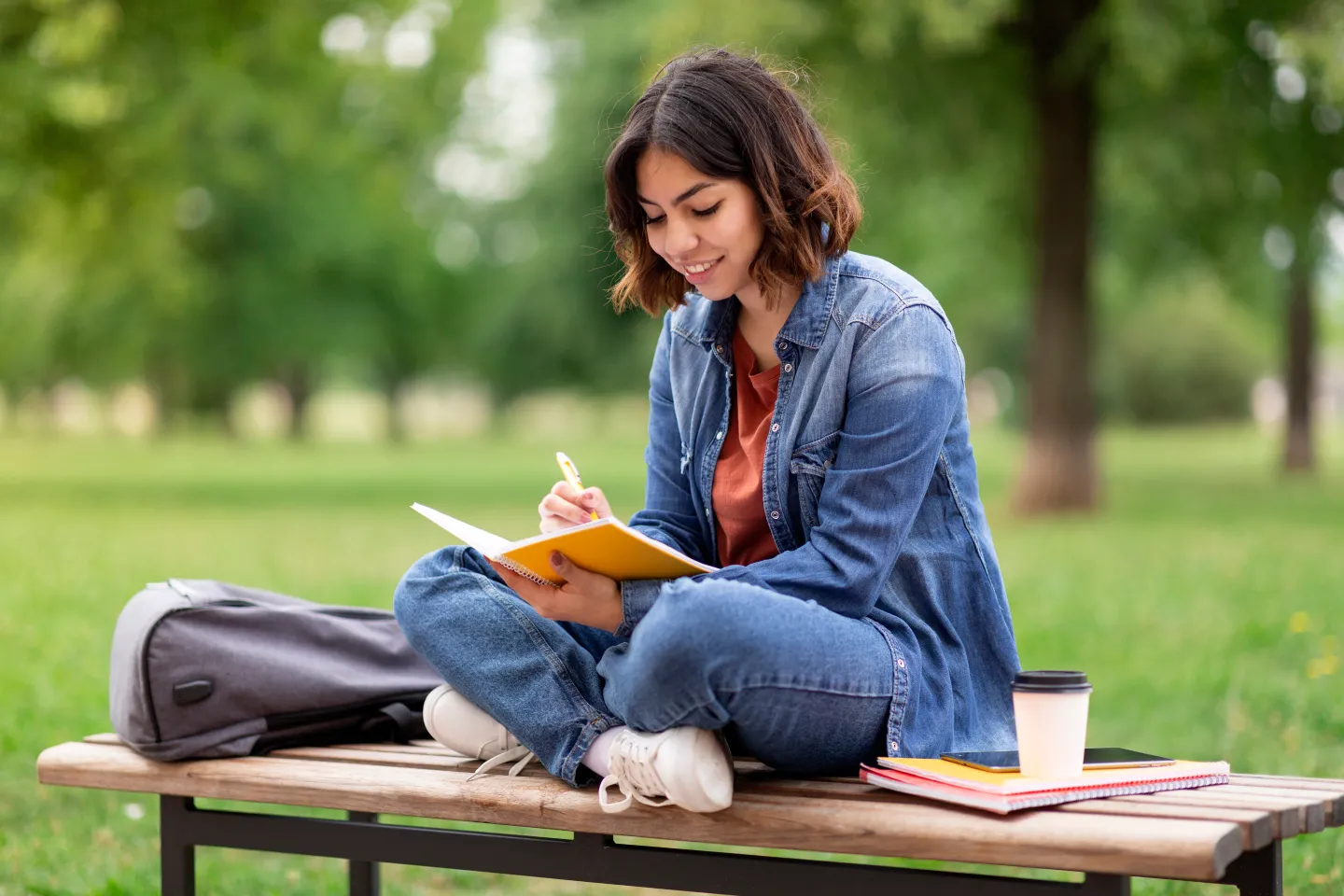It's no surprise that Canadians are struggling with higher food costs. The average grocery bill has increased significantly in the past few years, leaving families with less money to spend on other necessities.
According to Canada's Food Price Report for 2023, a family of four will spend up to $16,288.41 on food this year, an increase of up to $1,065.60 from 2022. With such high prices, it’s essential to find ways to save money on groceries. And while it may seem impossible in today's unsteady economic landscape, there are practical ways to save your hard-earned money at the grocery checkout.
Creating and following a household budget, searching flyers for sale items and other in-store promotions, as well as utilizing cashback apps or grocery store reward points are just some ways Canadians can learn to spend less on food items.
Whether you're a high-income earner, on a limited budget, or rely on government benefits or other forms of financial assistance, it's possible to make your grocery dollars stretch further. Let's look at the most practical tips so that saving money on groceries in today's economy can be easy for everyone.
Common Challenges When Buying Groceries
Canadians face many challenges at grocery stores that make it difficult to save money. For one, soaring food prices across the country haven't made it any easier to buy food without overspending. No matter your budget, the inevitable rise in prices can take a toll on your wallet, leaving you feeling like there's no hope.
Purchasing groceries on an empty stomach can also be challenging. Being surrounded by food when you're hungry can be a dangerous combination, leaving you more likely to throw caution to the wind and buy items that aren't in your budget or plan. Moreover, some items of convenience like ready-made meals, snacks, or pre-prepared food can be an expensive temptation if you're a hungry shopper.
Limited mobility or lack of transportation is another contributor to overspending on food. Those who cannot get to the store or make regular shopping trips may find themselves buying higher-priced food items from convenience stores, gas stations or ordering takeout.
Grocery Budgeting
The first step to saving money at the grocery store is knowing where your money is going. You can set a weekly, bi-weekly, or monthly budget for groceries that fits within your overall financial plan. For example, if you earn bi-weekly paycheques, you can create a budget based on that income cycle. Or, if you’re paid on a set date each month, you can budget for the month ahead.
Track your spending and take note of what items you need versus what you impulse buy. Start by creating your grocery budget well in advance of shopping. Whether you prefer a written budget or use an easy-to-use budgeting app on your mobile device, having a plan will help you stay focused and on track with your grocery spending.
Creating a Grocery Budget
Being realistic about your spending by understanding which items are necessary and important for your family. It's also helpful to consider how much food each person in the house eats and their dietary needs when planning meals for the week.
When creating your grocery budget, do the following:
Determine how much food you need for the week.
Know how much money you have to spend.
Get to know prices, when items go on sale and when they rise in price.
Factor in extra food expenses such as dining out or take-out.
Stick to the essentials only.
Once you've become accustomed to tracking food prices and budgeting for your purchases, you can become more mindful of your spending. Over time, it will be easier to save. Plus, if you have any leftover money in your budget, you could put it towards an emergency fund that you can use in the event of an unexpected expense.
Couponing & Other Discounts
Coupons, discounts, and deals are excellent tools for trimming your grocery costs. You can find them in various places such as newspapers, coupon websites, store apps, or directly on product packaging. If you're looking to maximize your savings on food items, combine these offers with ongoing store sales (if applicable).
You could also price match (if the store allows it) to save additional money on purchases. This means you'll be able to purchase an item at the lowest price possible, regardless of where it's available. So, if you're already on a tight budget and need to make every penny count, price matching is key.
Grocery Store Loyalty Programs
Many grocers offer loyalty programs to give you access to discounts and offers. You could save even more when you combine loyalty discounts with coupons and promotions. Of course, the savings you'll get from the program will depend on how much and which items you purchase.
For example, Loblaws Superstore's PC Optimum program lets you earn points for every eligible purchase. These points are redeemable for cash and can be used on groceries or other products at Shoppers Drug Mart, Loblaws Superstore, Real Canadian Superstore, and more. Some items may also be eligible for additional reward points, which you can use to purchase items in-store.
Apps to Eliminate Food Waste
Grocery stores also offer weekly deals on certain items, so planning your meals around these sales can lead to significant savings. There are even apps that work with grocery stores to eliminate food waste.
Many groceries, bakeries, pizzerias, restaurants, and coffee shops have surplus food that they would normally throw away at the end of each night. But, these apps that fight food waste allow you to buy these items at a discounted price. So, not only do you get to save money, but you also help reduce food waste!
Remember, the key to successfully using coupons and discounts is organization and planning. It might seem time-consuming at first, but once you get the hang of it, you’ll see your grocery bills drop.
Buying in Bulk
Buying items in bulk can lead to big savings, but only if you purchase the items you know you’ll use. Products like rice, pasta, canned goods, and toilet paper that have a long shelf life are ideal for bulk buying. Bulk purchases of perishable items would only be a good idea if you have a larger household to feed. Otherwise, you'd end up throwing away food.
Retailers like Costco, Walmart, or Bulk Barn offer discounts when you buy in bulk. You can also take advantage of online stores like Amazon that offer free shipping for items purchased in bulk. Items like diapers or paper towels are often cheaper when bought in bulk online. You could also opt into Amazon's subscribe & save option, which allows you to get discounts for regularly ordering certain items.
If it’s within your budget, you could always stock up on non-perishable items and store them in a cool place. Or, if you've stayed within your budget from the previous month, use the additional funds to stock up on bulk items you know you'll need shortly.
Online Resources & Apps
There are countless online resources and mobile apps designed to help you save on grocery shopping. Websites like RetailMeNot offer an array of coupons and discounts on varying products in Canada.
Additionally, weekly online flyers and price comparison websites can help your budget go further. Many of these websites are designed to help shoppers track prices across various stores and post the latest online flyers.
You could even search online for contesting websites that may have an active grocery card giveaway to enter. Using such resources can help you get some bang for your buck and ensure you’re getting the lowest prices.
Mobile Apps to Save on Food Costs
Mobile takes saving money on groceries to the next level. Apps like Flipp and Checkout51 allow you to compare prices on products across different stores, and get cashback when you buy certain products.
You can also consider using grocery delivery services like Instacart or Grocery Gateway to avoid going out and spending extra money on snacks or treats when you're in the store.
Keep in mind, though, that these apps usually charge a service fee and you may need to pay a minimum order amount for delivery. But spending a few extra dollars on the service fee could end up saving you money, especially if you're prone to impulse buying in-store.
Apps for Meal Making
Meal-making kits can be a great way to save money on food. Apps like Chefs Plate and Hello Fresh make it easy to order your meals and provide step-by-step instructions on how to cook them. Plus, these nutrition and cost-conscious meal options are often pre-portioned so you don't end up with tons of leftovers that end up going to waste.
These kits come with all the ingredients you need for a nutritious home-cooked meal and often cost less than if you were to buy each ingredient separately. You can also take advantage of new customer promo codes, where you can get up to 12 free meals just for signing up - another huge benefit when trying to cut food costs.
Smart Shopping Tips to Save More on Groceries
Being strategic about how you shop for groceries can help you save even more. Whether you're buying for just yourself or have a large family to feed, the following smart shopping tips can help you save more along the way.
Shop for Local Fruits & Vegetables
If you live in an area with access to farmer's markets or local produce stands, take advantage of it. Not only will you get fresher fruits and vegetables, but they are often less expensive than what you'd find at the grocery store.
Even if you don't live in an area with local produce, you can still shop the deals at your regular grocery store. Many times, stores will carry discounted items near their expiration date or markdown produce that is nearing its peak ripeness.
Plan Ahead
Meal planning is an excellent way to save on groceries and avoid impulse purchases. Planning out your meals for the week, so you know exactly what ingredients you need, can help you stay on budget and ensure nothing goes to waste.
You can also plan your shopping trips when stores are most likely to mark down items. This can often be late at night or early in the morning. For instance, fresh produce and bakery items are frequently discounted towards the end of the day.
To avoid impulse buys, make a detailed list of what you need before entering the store and stick to it. Shopping on a full stomach can also help you resist the temptation to purchase unnecessary items that aren’t on your list.
Purchase Items in Season
Buying in-season fruits and vegetables can be significantly cheaper. It’s also a good way to eat fresher, healthier foods on a budget. There's nothing worse than buying produce that is overpriced and lacks flavour.
When you buy in season, you can also take advantage of the abundance and freeze what you don't need. This way, you don't have to worry about food going bad before you get a chance to use it.
Long-Term Savings
With food costs on the continual rise, there’s no question that finding ways to save money over the long term can be beneficial. Grocery shopping shouldn't be a burden on your bank account by constantly putting you in the red.
Along with following the above grocery shopping tips to help you save money, you can also start making long-term changes, so that you're not stuck in a financial rut when it comes time to stock the fridge.
Here are some long-term changes you can start implementing to cut down on rising food costs.
Invest in a Deep Freezer
A deep freezer might seem like a big investment, but it can save you a significant amount of money in the long run. Extra storage space allows you to buy items in bulk or when they're on sale and freeze them for later use. This is particularly useful for meat and other perishable items that can be expensive when not on sale. It also allows you to freeze leftovers or large batches of food to save time on future meals.
Grow Your Produce
Consider starting a home garden to grow your fruits and vegetables. This can be a fun hobby and a great way to save money on produce. Plus, homegrown vegetables often taste better than store-bought versions, and you can be sure they're free from harmful pesticides.
Even if you live in a small space, you can still consider container gardening. With the right tools and resources, you can set up a thriving garden in your backyard or even on your balcony. Indoor gardens are also an option and can be especially helpful in cooler climates like Canada.
Learn to Preserve Food
Learn the art of canning, pickling, and preserving. This allows you to buy fruits and vegetables in bulk or in-season and preserve them for future use. Not only does this save money, but preserved foods can also add variety and flavour to your meals.
Some ideas for preserved foods include jams, sauerkraut, pickles, and more. With the right tools and ingredients, you can create delicious homemade food to enjoy all throughout the year. You can even sell your creations for others to enjoy - and you can use the extra cash towards your grocery budget.
Never Worry About High Grocery Bills Again
Cutting costs at the grocery store is possible - even in today's expensive environment. These tips can help you reduce your grocery spending without compromising the quality of food and ingredients in your meals. But, if you're still struggling to keep up with the rising food prices, consider a fast loan online from iCash. With fast approval and instant funding, you can get the financial support you need to cover essentials like grocery bills.











